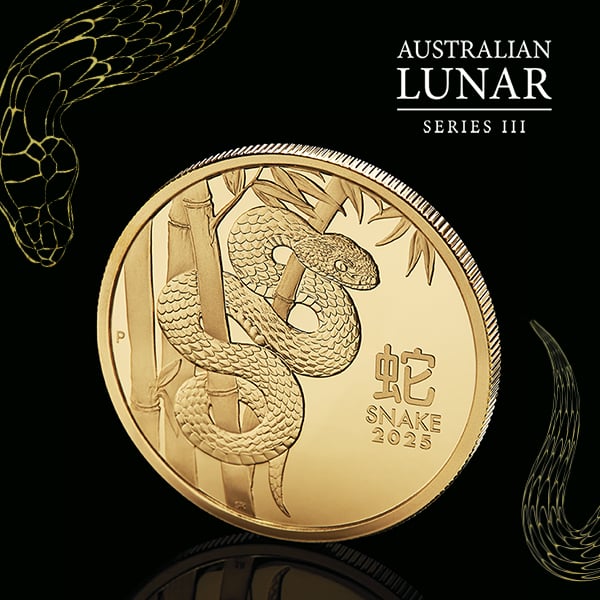Silver surges as gold hits all-time high in USD

The USD gold price hit record highs in July, trading above USD 1,960 per troy ounce. Silver also rallied strongly, up by more than 30% for the month.
Declining real yields and a weak US dollar are driving the market higher, with investors increasing their portfolio allocations to the precious metals.
July 2020 market summary:
- Gold prices rose 11% in July to hit an all-time high in USD terms, trading at more than USD 1,950 per troy ounce.
- Silver was an even better performer, increasing by 35% to close the month at more than USD 24 per troy ounce.
- A decline in the USD, which fell by more than 4% during the month, and a continued plunge in real yields were the primary drivers of the precious metals market.
- Gold ETF holdings increased again in July, continuing their record run seen in 2020.
- Overall gold demand has been held back by a circa 50% drop in demand from China and India in H1 2020 relative to a year ago.
Record July for precious metals
Precious metal prices delivered one of their strongest months on record in July. Gold captured most of the headlines with prices touching a new all-time high in nominal USD terms above USD 1,960 per troy ounce toward the end of the month.
Prices have continued to climb in early August, with spot gold topping USD 2,000 in overnight trading.
The precious metal has now hit record prices in most currencies over the past few years, with the gold price in USD the last domino to fall.
July 2020 also saw other markets making records, with the S&P 500 ending the month at an all-time high and the US 10-year treasury yield finishing the month at an all-time low.
While gold has now risen by almost 30% for the year, silver was the star performer in July, rallying by an incredible 35%. From the lows seen in late March 2020, silver has almost doubled in price and is now outperforming gold on a calendar year-to-date basis.
AUD returns for gold and silver were modest, with the metals gaining 6% (gold) and 28% (silver) respectively in July. The smaller gains are a result of the continued strength in the AUD, which ended the month above USD 0.72, having now rallied by more than 30% vs the USD since its late March lows.
The strong moves in precious metals seen in July were driven by multiple factors. These included weakness in the USD, a continued decline in the real yield on US Treasuries and rising market concerns regarding the economic impact of the steps being taken to slow the spread of COVID-19.
This report addresses some of those factors.
USD weakness boosting gold
The USD index fell by more than 4% in July, its largest monthly decline in a decade. Various factors, including rising political uncertainty in the lead up the US Presidential election and a more than 30% decline in US GDP in Q2, contributed to the fall.
Mounting concern about the long-term implications of the fiscal and monetary policy support being deployed into the US economy was also a contributing factor. A more than USD 2 trillion rise in the US budget deficit over the past year is being matched dollar for dollar with an increase in the holdings of US Treasuries sitting on the balance sheet of the US Federal Reserve.
The weakness in the USD has been a tailwind pushing gold higher since late March.
A weak USD is typically beneficial to gold, though it’s important to remember that gold is not dependent on a weak dollar to perform well.
As an example, from the end of 2017 through to March 2020 the US dollar increased by approximately 10% while gold rose by more than 20% over this same period.
Whilst a short-term snapback in the USD would not surprise, it appears as if there are now multiple headwinds conspiring to push it lower following a multi-year bull market that saw it gain more than 35%.
Should a prolonged period of USD weakness eventuate, it will be another element of support for precious metal prices.
Real yields continue to fall
Whilst the fall in the USD gained lots of attention in July, the continued decline in real yields on US treasuries was arguably an even bigger driver of the gold price.
As a non-yielding asset, it should be no surprise that, all other things being equal, gold would tend to perform best when real yields on other assets fall, as it lowers the opportunity cost of investing in gold.
The following chart plots the price of gold in USD and the real yield on the US 10-year treasury bond (which is inverted on the chart). It highlights how important real yields are to the gold price, with a very strong correlation over the past 15 plus years.
Ending July 2020 at -1%, the real yield on US 10-year treasuries has never been lower, falling from +0.91% in September 2018. Since then, the price of gold has increased by almost 65% in USD terms.
Gold ETF holdings continue to grow
At the time of writing end of month figures for July were not yet available, however data to the 24 July highlighted continued inflows into gold ETFs globally, with holdings increasing by more than 130 tonnes for the month so far.
Australian investors remain a key driver of these inflows, with Perth Mint Gold (ASX:PMGOLD) seeing total holdings rise by more than 5% in July.
Portfolio allocations to gold remain modest
Despite the surging price, and increase in demand for gold seen in 2020, investor allocations to the precious metal remain modest.
This is a theme we explored in a detailed Livewire Markets article last month, where we presented ETF data that suggests portfolios have a less than 0.50% allocation to gold at present.
Gold to silver ratio plunging
Silver’s rise in July saw the gold to silver ratio (GSR) decline to just above 80:1 by the end of the month. July also saw silver ETFs record some of their biggest inflows in more than five years as investors increased their exposure to the metal.
Whilst a one month move of more than 30% is unusual, it needs to be looked at in the context of the violent sell-off seen in silver during March 2020. During that month, silver prices fell toward USD 12.00 per troy ounce, a decline of over 25%, which saw the GSR peak at more than 120:1.
This can be seen in the chart below, which plots the GSR on a monthly basis from the end of December 1999 to end July 2020, as well as the average GSR over this same period. It also shows the average GSR from 1970 to 2020.
Although we wouldn’t be surprised to see silver spend some time consolidating recent gains, a current GSR of more than 80 suggests that, relative to historical levels, it remains cheap compared to gold, even after the huge move seen last month.
Retail demand weak
Whilst investment demand for gold in ETF form is running at all-time highs, other areas of the market are weak. The most notable is gold jewellery demand, which in H1 2020 totalled just 572 tonnes, down 46% relative to the figures seen a year ago.
This is no surprise given the impact that COVID-19 has had in Asia, with higher gold prices and a reduction in disposable income understandably impacting demand.
Total bar and coin demand also softened, coming in just below 400 tonnes in H1 2020, down almost 20% relative to the prior year. This was largely driven by very large falls in demand from Asia and the Middle East (off more than 50% in some countries in Q2 2020) with Europe and North America actually seeing rising demand.
What’s next – caution in the short term
Whilst no one can be certain how markets will play out in the years to come, we doubt this will be the last time price spikes of 20-30% in a month for silver are seen, or the last time gold moves up by more than 30% in barely six months.
Nevertheless, it’s also important to realise that no market moves in a straight line.
To that end, whilst gold and silver’s incredible price strength and rising popularity as investments should be celebrated, investors should not expect gains like this to be repeated month in, month out.
Indeed, with gold now having had an almost two-year run without any meaningful correction, and with investor bullishness soaring in light of the overnight move in gold above USD 2,000 per troy ounce, caution is warranted in the short term.
A period of consolidation in which the metals potentially give back some of their recent gains is not unexpected. Should this occur, it would actually be a healthy thing for the market, helping shake out some of the froth that has built up in the past few months.
Over the medium- to long-term the outlook for gold and precious metals demand remains positive, with the investment case to include gold in a well-balanced portfolio as strong as ever.
DISCLAIMER
Past performance does not guarantee future results. The information in this article and the links provided are for general information only and should not be taken as constituting professional advice from The Perth Mint. The Perth Mint is not a financial adviser. You should consider seeking independent financial advice to check how the information in this article relates to your unique circumstances. All data, including prices, quotes, valuations and statistics included have been obtained from sources The Perth Mint deems to be reliable, but we do not guarantee their accuracy or completeness. The Perth Mint is not liable for any loss caused, whether due to negligence or otherwise, arising from the use of, or reliance on, the information provided directly or indirectly, by use of this article.











